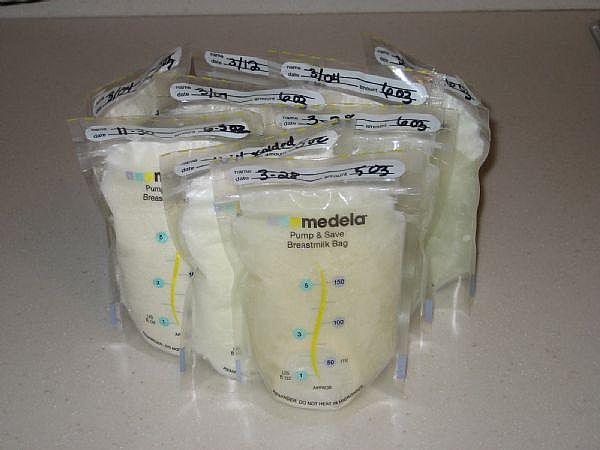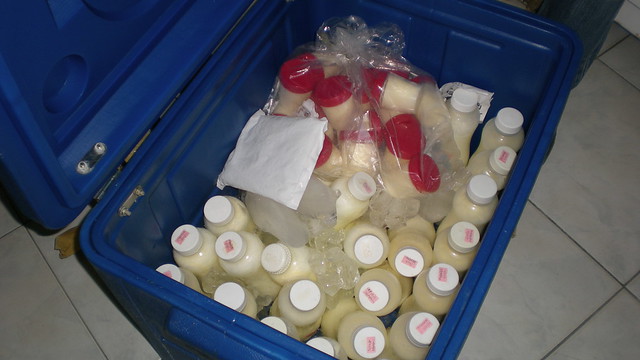Did you know that you have a superpower (well, maybe more than 1...but today we're just focusing on one)? If you are a female, your superpower is that you can make breast milk! You are able to completely sustain another living being on this incredible liquid that your body makes. It is really mind-boggling to think about, but the whole human race would have long since died out if you didn't have this superpower!
Your Amazing First Milk
 |
| The bottle on the left contains colostrum; the bottle on the right contains mature milk. Picture from Wikipedia. |
Some mothers actually begin leaking colostrum while they are still pregnant. As soon as your baby is born and the placenta is delivered, there is a huge hormonal shift that puts your body into milk-making mode. From the moment he is placed on your chest skin-to-skin right after birth and takes his first meal at your breast, you are giving him just the right amount of colostrum. His tiny stomach can only comfortably hold about 5-10 cc of fluid, and that is just what he gets in his first feed.
Colostrum is pretty thick and has a yellowish color. Some moms call it "Liquid gold!" It really is very valuable because it does some amazing things for your baby!
- It coats his intestinal tract forming a protective seal against any pathogens.
- It is very high in IgA and IgG, two immunoglubulins that offer your baby tremendous protection.
- It has higher concentrations of Vitamin K than mature milk.
- It is low in fat, but high in proteins and enzymes that a newborn needs.
 |
| From Familyholiday.net |
Your Milk Keeps Changing
Between day 3 and 6 your milk will "come in." Your breasts will feel full, and the colostrum will begin changing to milk. It is really important to avoid getting engorged; the best way to do that is to nurse frequently.
Your milk is absolutely amazing in so many ways:
- It has natural DHA and ARA, two fatty acids that are critical for brain development. Although many formulas have added artificially created forms of these two acids, they do not function the same way that the naturally occurring substances do.
- Although it is relatively low in protein, it is high is specific proteins that your baby needs like taurine.
- It contains lipase and lysozyme which helps breastmilk to be more rapidly digested and utilized by your baby. That's why breastfed babies need to nurse every 2-3 hours.
- It is low in iron, but lactoferrin makes that iron highly bioavailable to your baby!
- Specific IGA antibodies that form in response to any bacteria or toxin a mother is exposed to.












